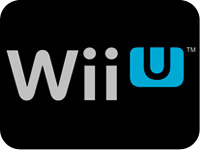
Nintendo’s next-generation video game console system, the Wii U, will arrive at stores on Sunday and is expected to sell out quickly. This could leave many holiday shoppers unable to find one as Nintendo will be unable to meet the demand.

In many ways this is a replay of the 2006 launch of the Nintendo Wii, which was a smash hit — so much so that it took years for supply to reach demand. Nintendo is expected to sell 3.5 million Wii U units worldwide, according to IHS Screen Digest, but as with past hardware launches, many fans will simply have to wait until production meets up with demand.
“The Wii U will be sold out for a while because demand will outstrip supply, which is a good thing for Nintendo,” said P.J. McNealy, consultant for Digital World Research.
Nintendo did not respond to our request for further details.
Nintendo’s Next Level
Having a system that is desired but out of reach for many actually could work in Nintendo’s favor. It means the system will be talked about and sought after, which will keep fans eager to get one. On the other hand, if the company can’t meet the demand, it could missing a golden opportunity, especially as Microsoft and Sony aren’t introducing rival systems this year.
In fact, this is the first time since 1995 that Nintendo has owned the holidays. In 2001, the Nintendo GameCube was released within days of the Microsoft Xbox, while in 2006 the Nintendo Wii came just days following Sony’s PlayStation 3 debut.
This should put Nintendo in the driver’s seat, but it isn’t clear the company is taking advantage of this opportunity.
“What is the killer app for the Wii U? Other than ‘more,’ what sets the U apart?” wondered Mark Baldwin, principal analyst at Baldwin Consulting.
“The day of better hardware for hardware’s sake is coming to a close,” he told TechNewsWorld. “Yes, the ultra fans want the latest, but the [customer masses] want something that they didn’t have before.”
Hardware to Sell Software
Nintendo is also in a very different position with the Wii U, simply because it is following the playbook of Microsoft and Sony by adopting the razor blade model, whereby the razor is sold at a loss to sell razor blades.
“It is telling that this time they aren’t profiting on the sales out of the gate with the Wii U,” said Billy Pidgeon,senior analyst at Inside Network.

“While the profit margin with the Wii was very small, the company was able to reduce costs. There were few price reductions, and over time Nintendo made money with the Wii. This time, they are selling below cost,” he told TechNewsWorld.
“That is the reality of the business for video game consoles,” Pidgeon said. “People expect better pricing for game consoles. Part of it is the economy, but another part of it is the ubiquity of games being available for so many devices. The days of the high-priced game machine are over.”
Given the evolving and changing business model of the video game industry, Nintendo could be setting itself up for a tremendous fall. While the Wii had solid sales and actually outpaced analyst expectations, the software sales weren’t there.
“The Wii wasn’t completely a success in the first place,” Pidgeon added. “Nintendo had a missed opportunity with the Wii by not selling more hardware early on, but they had a slim margin on the hardware. The real problem is that they didn’t ever get the attached rate with software.”
Back to Hardcore and Family
Nintendo’s solution may be to aim at core gamers and the family this time, rather than making a machine for everyone. The Wii may be the choice for retirement homes, cruise ship lounges and community activity centers, but many users are sticking to simple titles such as Wii Play and not buying more games.
“Wii Play for one was a big hit because it came with the extra controller,” Pidgeon noted, “so this time around it looks as if Nintendo is going to sell to the gamers first, while the Wii was their mass market thing.”
This is evident in the choice of games being offered at launch. While there are family-friendly offerings such as “Nintendo Land” and “SiNG Party,” the 29 launch titles include many aimed at hardcore gamers.
“I am impressed by the Wii U launch lineup — in fact, way more impressed than the Wii launch lineup,” McNealy told TechNewsWorld.
“Nintendo got key third-party support for launch from Activision, Electronic Arts and Ubisoft — much of which was missing for the Wii launch,” he noted. “It bodes well for the flow of games, and we’ve heard from several developers that the Wii U is fairly easy to program for, which helps.”
Sharing the Living Room
The system’s big not-so-secret weapon maybe its ability not to dominate a room. Unlike past gaming systems, which either took over the living room or were quickly relegated to the playroom or second TV, the Wii U has a unique tablet-like controller that could solve the space-hogging problem.
“The Wii U is fairly simple but crucial,” added McNealy. “If a family wants to have a multiplayer fun experience in the living room using the big TV, they can’t do it with four iPhones, iPads, Kindle Fires or Windows 8 devices.”
They can with the Wii U.
“That is the element of family gaming that is unique to Nintendo, and one they’ll exploit while the rest of the field looks for solitary devices with online connectivity,” McNealy suggested. “Nintendo has this element completely figured out.”





















































